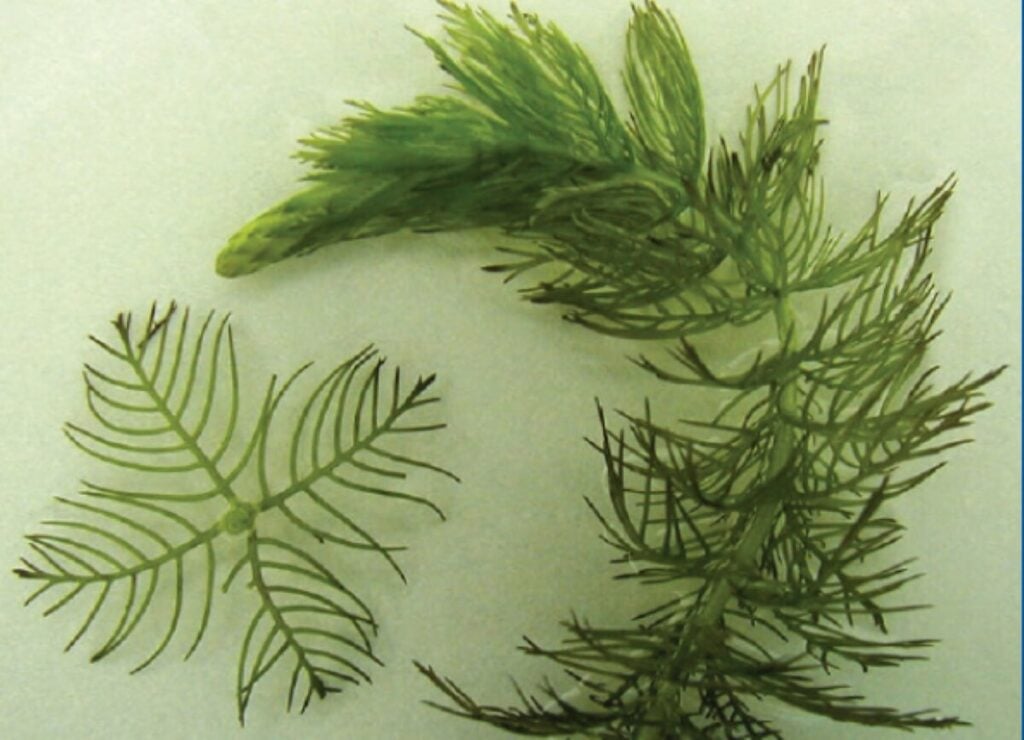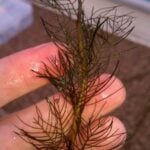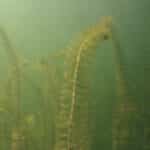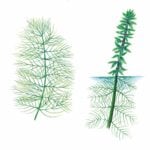Northern Watermilfoil
Other Common Names: common watermilfoil, shortspike watermilfoil
(Myriophyllum sibiricum, Myriophyllum exalbescens)
Native
Northern watermilfoil has feather like leaves with five to 12 pairs of leaflets whorled around the hollow stem along the entire length of the plant.
Description
Northern watermilfoil stems are typically peach or pinkish colored and sparsely branched.
The leaves of this plant are completely submersed, dark green, and up to two inches long. They are divided all the way to the midvein like a feather, containing five to 12 pairs of leaflets on a short leaf stalk.
Milfoil flowers occur atop the same stem as the leaves. The spike emerges from the water; flowers are tinted red and spaced out.
Northern watermilfoil produces winter buds late in the season that are small, stiff, dark leaves. These buds will fall off the plant as the rest of it begins to decay and wait on the sediment for spring.
There are eight species of watermilfoil in the midwest, and all are native except Eurasian watermilfoil. Northern watermilfoil grows with much more control than Eurasian watermilfoil and does not form the large canopies of leaves in short periods like Eurasian watermilfoil does. Eurasian watermilfoil also fragments more, which adds to the unrestrained growth.
Unlike Eurasian watermilfoil, the leaves and fruit of northern watermilfoil are consumed by some waterfowl, and fish are sheltered amongst the beds of plants.
Management Options
Click here for more information on how to control watermilfoil.
Location
Northern watermilfoil can be found across the United States.
Propagation
roots, winter buds
Management Options
Click here for more information on how to control watermilfoil.





